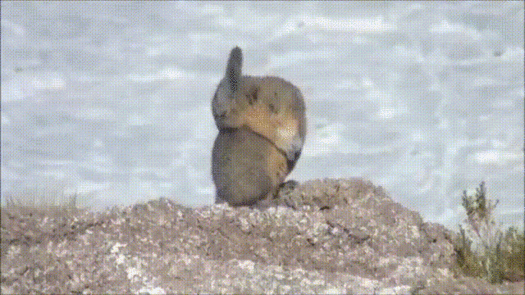

So, here are the rules: To answer, follow us on Twitter and tweet at us with the hashtag #mysteryanimal. For example:
Hey @PopSci, is the #mysteryanimal a baboon?
And then I might say “if you think that’s a baboon, perhaps you are the baboon!” But probably not, because this is a positive environment and all guesses are welcome and also this is not a very common animal so guess whatever you want!
The first person to get it right wins! We’ll retweet the answer from @PopSci, and also update this post so your amazing animal knowledge will be permanently etched onto the internet. Show your kids! Your dumb kids who thought that was a baboon!
Update: And the winner is…Logan Copeman, who correctly guessed that this is a viscacha (Lagidium viscacia, also spelled vizcacha)! Specifically, this is a southern or mountain viscacha, a rodent found in South America. Yep, rodent: the viscacha is not related to the rabbit family, though it looks similar; the rabbit belongs to an entirely different branch of the evolutionary tree, and the fact that the viscacha looks so much like a rabbit is an example of convergent evolution. Convergent evolution describes when two species not closely related end up adapting to their environments in the same way.
The viscacha lives in the southern Andes mountains, and is closely related to the chinchilla. It’s sometimes known as a long-tailed rabbit, thanks to its long ears and fluffy coat. It moves similarly to a rabbit, on very strong hind legs, hopping around its mountain home to eat a variety of grasses, mosses, and lichens. It lives in colonies, like all members of the chinchilla family, which can widely range in size. It’s not particularly rare; it is sometimes hunted for its meat and fur, but is believed to be holding steady, population-wise. Hi viscacha!
